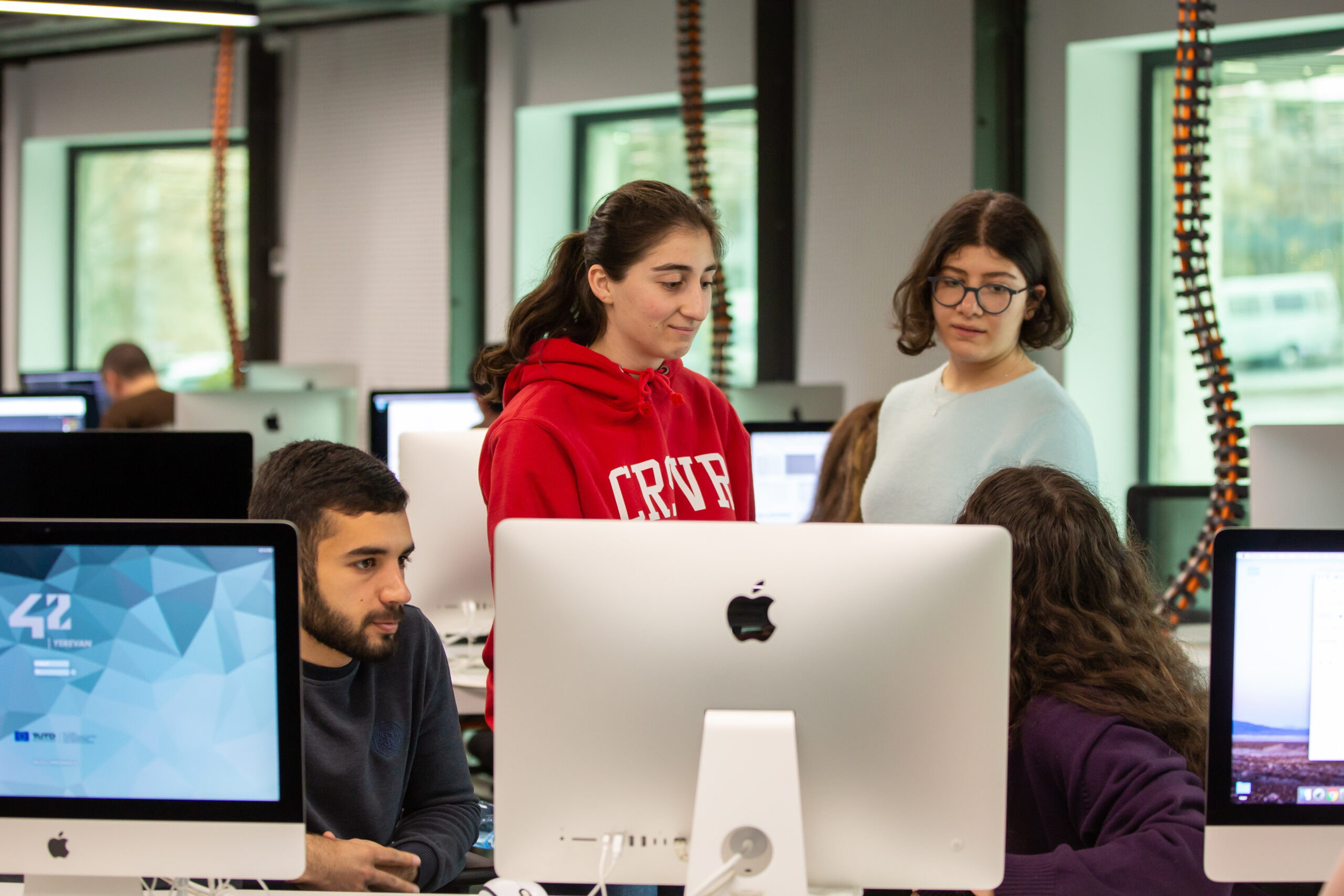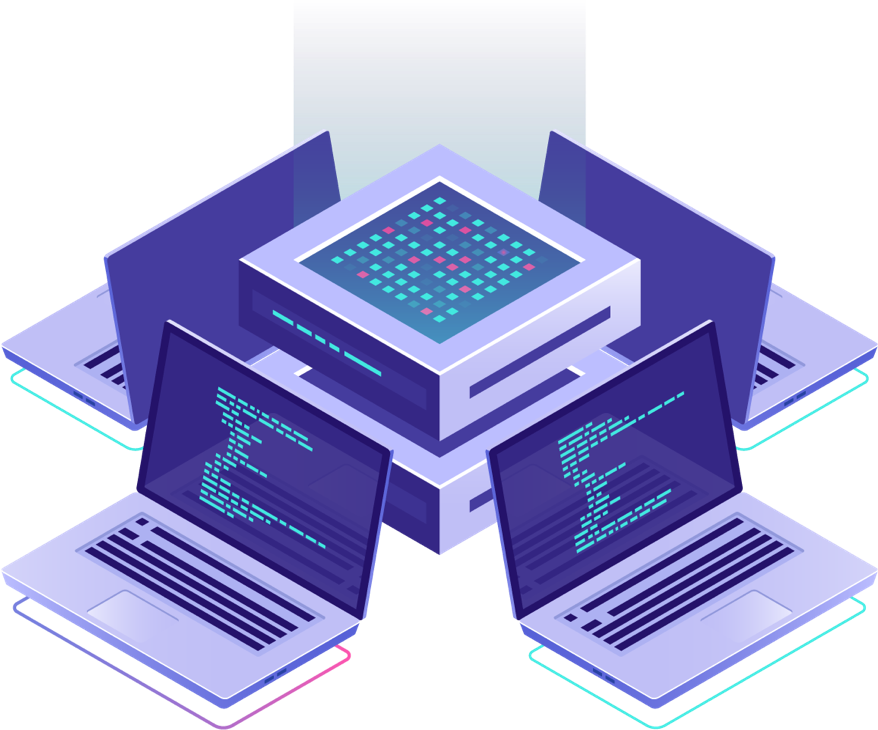Open campus
A place to thrive in and study. It fosters creativity, encourages experimentation and promotes entrepreneurial creations.



You have to work hard to progress. However, once you’ve reached a dead end, don’t hesitate to ask advice from people around you. Projects carried out alone or in a group must first be discussed then evaluated by other peers who have not necessarily progressed at the same pace. In these moments of exchange, you have to justify your choices, give arguments on “why” you decided to solve the project the way you did. This collective intelligence allows good practices to emerge and groups to advance and will help you consolidate the knowledge you have acquired. This is core to 42.
Learning at 42 involves seeking concrete solutions to the problems you face – rather than having to memorize lessons without any practical applications. From your very first steps at 42 – namely the Piscine – you are asked to think by yourself and discover solutions. Of course, no one expects you to be able to do everything from the start. In fact, failures and mistakes are a better way to learn than lectures. At 42, errors are simply an invitation to try again.

At 42, progress is based on a system of experience points (called XP) and levels, just like in a video game. This is what we call “gamification”. There are many ways to reach the top level (Level 21), and go even beyond.
A place to thrive in and study. It fosters creativity, encourages experimentation and promotes entrepreneurial creations.
All spaces are well lit, wide and accessible. There are common areas to meet and relax.
The clusters are open 24/7, all year long.
Work in a high tech environment with more than 150 cutting-edge workstations.
An inspiring work atmosphere that welcomes and involves everyone, regardless of who they are or what they do for a living.